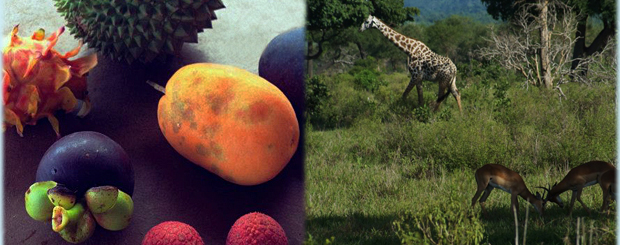
| Fruit photo © Eli Reeve | Wildlife photo © David Krug |
Spreading of wilderness fruit paradises
The concept of this project is flexible and we are expecting to consider the views and opinions of many parties and rules relevant to this project. The amount of funding and volunteer support will also play a big role.
Please feel welcome to contact us for further information and discussions about this project and possible partnerships.
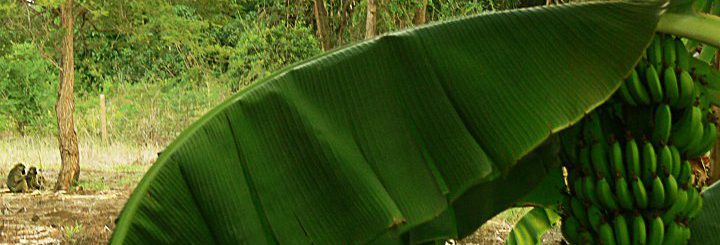
|
An example of the project´s fundamental concept in brief
The idea is too little by little create a growing paradise-like ecologically sustainable society where both residents and visitors are living in peace, health and harmony along with the natural wildlife and the nature eating only fruits and some greens.
The paradise society will be consisting of a few different neighboring areas, where each area is on a different level of natural living and different level of freedom from “modern world” appliances and activities. Possibly in the future the more modern area could include a school and orphanage.
The project aims to in time be open for both local resident families and people internationally to come live in the nature for free but before this can be realized there must be a good structure built up so the project doesn´t outgrow itself and gets some problems from this.
A further goal is that some of the people living in this environment will be inspired and educated to start similar projects in different parts of the world as there is a large conscious demand as well as a large unconscious demand and need for this kind of harmonious and sustainable living.
The communities shall also aim to communicate with any neighboring villages about the specific needs of these villages and when possible also find ways to aid the villages in ways compatible with the values of the fruitarian project.
Large parts of the world population are living so far from their natural foods, environments and activities that this is causing both physical sickness, stress, depression and desperation on a large scale. The ultimate goal of this project is to in time offer a solution to these problems for as many people as we can.
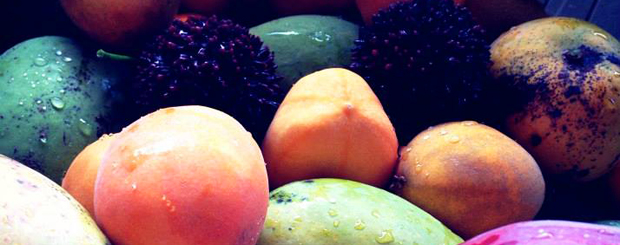
|
All nature areas should if possible have the following in common:
Fruit forest and berries of many different kinds planted (possibly some plantations from the start plus planting of new trees and seeds).
When there is a lack of fruiting trees in season fresh fruit shall be made available in other ways to all areas. When eating fruits a big part of the seeds shall be planted in a plant nursery to produce even more fruit trees in the surrounding area. Thousands of seeds will be spread, some will grow.
There should be a permanent river or spring with clean drinkable water most of the year or coco nuts enough for drinking. The area could also be close to the sea and combined with simple but effective distillers to turn sea water into good quality drinking water.
The place needs to offer safe water for taking a swim (crocodile free or at least with crocodile free diversions). The water can be in the shape of a sea, river or springs.
If the river is vegetated there shall eventually also be a water hole with more free sight for being able to watch wild animals drinking from a little but safe distance, possibly on a little tree platform or seats in the tree. The water hole can be manmade and we can lead water there from the river for example.
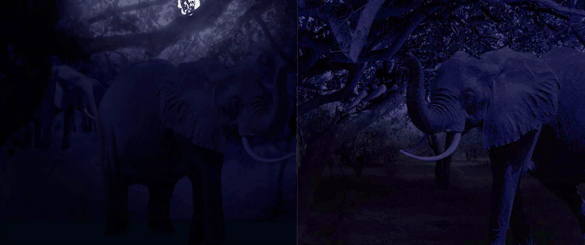
|
We are looking for a place with abundant wildlife including elephants, baboons, gazelles and a large amount of other types of animals.
The idea is to live in peace with and not disturb for example elephants, rhinos and big cat animals. Some quick and safe escape possibilities will be arranged if one needs to get out of the way of certain wild animals. Very stable bau bau trees made easily climbable for example, or other suitable trees. Possibly we can also build some other type of safe room for people who are not fit to climb.
We welcome the animals to eat off of the fruit trees and trees but we might also plant some fruit trees out of the way of monkeys, elephants and other animals that might otherwise finish the food off at a fast pace and destroy a lot of trees as well.
There is more than one way to shield trees even if this can be a bit costly and less natural. As we see a peaceful relationship with all animals as a top priority we will not be no scaring off animals to keep them away from the fruit trees. If we run out of fruit we would prefer finding a way to finance buying fruit for ourselves until there are enough fruiting trees again for everyone. Donations in a private manner could be one way and support from a NGO or starting a NGO for the purpose of communication and raising money could be another way to do this.
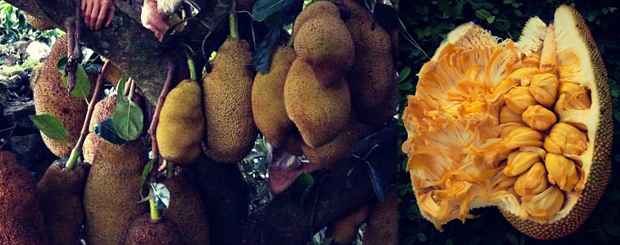
|
Types of areas available to chose between or move between:
The all natural area
The goal is to make an area where people will feel as free as before the fire was used and the “modern man” started inventing tools. Therefore this area will be kept free from all tools and belongings, even clothes.
The shelters will be built by branches, leaves and rocks etcetera and some people might choose to sleep up in the trees. No unnatural materials and no cameras can be used or brought into this area unless there is a special permission for specific occasions and reasons.
As we will not permit any leather, furs or other reminders of killing animals we will if nights are cold consider allowing some kind of blankets instead as an only exception. If the water quality of the place we find is consistent all day then no water jars will be necessary, one will drink from the spring/river. If however the river is used upstream so that the water quality is best in the early morning, then water containers may be allowed also in this area.
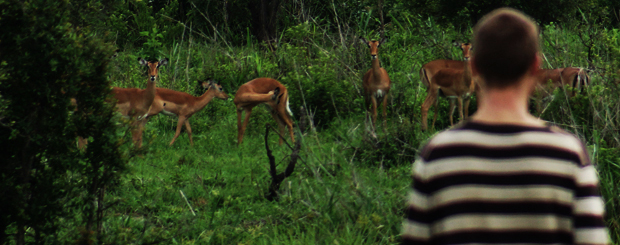
|
The almost natural area
In this area we will only eat raw food and fruit. If possible the area will be subdivided into a raw food part and a 100% fruitarian part so that someone that only wants to be exposed to fruit can choose to stay on that side.
Any shelters here are built to look very natural from the outside in the mud-house kind of way but concrete/plastic tarp filling in walls and roof and mosquito nets for the windows are allowed.
Blankets, sleeping bags, towels and pillows are allowed.
Shovels and some other tools and containers for a plant nursery will be available but besides this there will be no modern equipment in this area at all as this area will be a beautiful resting ground with many animals and free from reminders of the “modern society”. No technology, no media, no musical instruments, no flash lights, no fire and so on but one is always free to go to the modern area next to it when one misses something.
Only compostable everyday materials are allowed here so no garbage disposal is needed in the area (except for when we are building the shelters).
There should be a shared outhouse/latrine for guests and newcomers.
There should be another shared outhouse for 100% raw eaters and a system for hygienic routines.
Some kind of fresh water containers to borrow might be available.
In this area we want to avoid reminders about modern clothing brands, fashion industry etcetera so some kind of collective clothing might be offered that can be used also when swimming.
Cameras might be allowed here under special circumstances only, for example one day a week or with special permission when making a documentary about the project. Other than that this shall be a technology free zone.
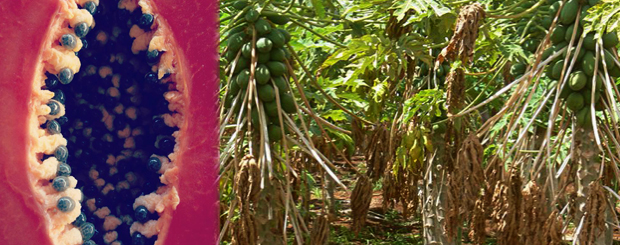
|
The 100% raw vegan area with modern communication, electricity and ordinary clothing/shoes
Only raw food and fruit is permitted in this area. The area will if possible be subdivided into a raw food and a 100% fruitarian area so that someone that only wants to be exposed to fruit can choose to stay on that side.
Welcome to use cell phones, computers, printers, books, magazines, flashlights and cameras here and watch movies/listen to music with (we still rather have sounds of nature dominating over different people´s music and movies, so headphones should be used).
Electricity from a generator is available at some times between sunrise and sunset.
Certain sub-areas for playing acoustic non loud instruments like guitar/flute/harmonica.
Limited amount of 100% water/windproof shelters with doors and beds. Materials like concrete, metal and plastic may be used to build these shelters but also a lot of natural materials.
Blankets, sleeping bags, towels and pillows are allowed.
Shared outhouse/latrine for guests and newcomers
Shared outhouse/latrine for 100% raw eaters
Toilet paper allowed at latrines, but littering or paper elsewhere strictly forbidden. Wash hands in the river instead of drying them with paper.
Some kind of fresh water containers to borrow might be available.
There will be one a garbage disposal for paper and other materials at the entrance/exit.
Least possible non compostable materials will enter this area but when needed it is ok.
This area may have one or two camp fires on occasions depending on the demand and on available firewood without cutting trees on the area.
This area will have sub-areas in different corners where one can practice activities as playing ball, skateboarding and some other activities that demand equipment and may make some sounds.
We are very open for suggestions and quite flexible when it comes to what to do in this area.
No unnatural soaps/laundry soaps/shampoos/tooth pastes are allowed. For these kinds of things one will have to stay at a nearby hotel and just come visit this area instead of staying overnight here.
Perfumes are not allowed even for visitors as it disturbs/annoys many wild animals that can smell it from hundreds of meters away and the smell make them less likely to come around.
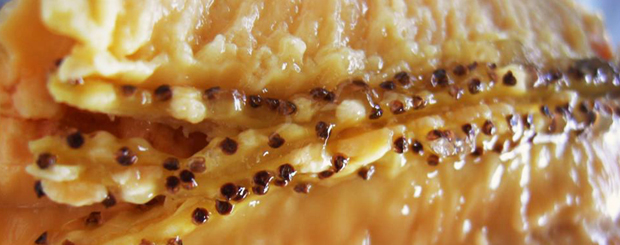
|
Traditional eco tourism camp
This area would be similar to traditional camps/eco-hotels for tourists with 24 hour per day electricity, water closet toilets, warm water showers, tap water and cooked food. It will not be first priority to create this area since it is similar to existing camps outside of our project and also one of the more costly areas to build. Possibly we could start working with one that exists and have too many vacant rooms and that might be interested in offering their guests tours to the vegan communities.
This camp may at some point be a good addition to the natural areas, for example to let eco-tourism finance some of the plant purchases and fruit purchases for the nature areas.
A camp would also help attracting many different kinds of people to this area and let them visit the more natural areas briefly to introduce them gently to that natural and healthy harmonious lifestyle to spread positive ideas in mainstream society. Not everyone will be ready to move straight to the nature paradise and we want to help lots of people from different backgrounds to a better life.
People staying in the more natural areas might also want to invite more traditional living family and friends to visit them and this camp would be a convenient place for some of them to stay since this camp is similar to what many people are used to. This camp might be divided into certain subareas for different lifestyles.
At this camp we might also offer health- and happiness workshops, life coaching among other things.
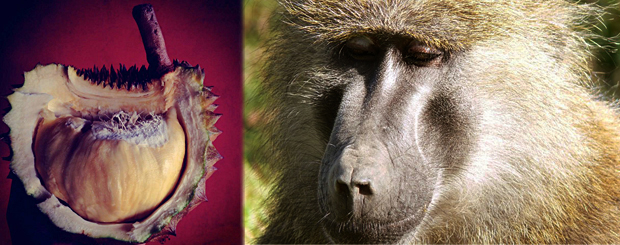
|
The land for the project
The project could be realized together with local community, the state or on private land co-working with the land owner or land can be leased or bought depending on the laws of the country in question. Different people that want to participate in the project can invest money, smaller as well as larger investors, including ourselves.
To work against deforestation even more than with our own planting of fruit trees we can also find suitable open areas for planting forests of both fruit trees and other trees. Some of these areas could be bordering to the original fruit community and some can also be in new places that can make out possible new fruit communities in the future.
This can for example be financed through offering gift certificates in the western world and Africa for people as well as partnering companies and organizations that want to compensate for the deforestation made in other parts of the continent and world. The certificates can be charitable gifts for family and friends.
Especially the raw food and fruitarian international societies may be great supporters of the project but also anyone who likes animals and nature and wants to act against deforestation. Supporters may be offered newsletters or contact with the project over mail/internet and are of course free to visit if following the guidelines for food etcetera.
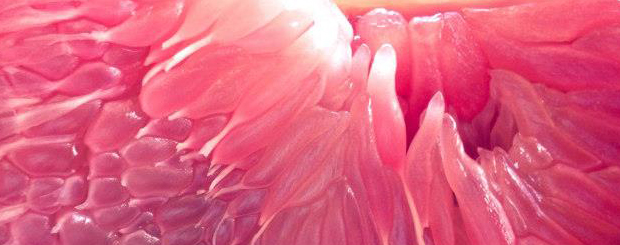
|
We believe that there will be companies, organizations and travel agencies open to contribute as sponsors to support and associate their selves with the project and we will create some guidelines for what kind of partners that are suitable and acceptable for our eco project.
Part of the project can be done together with the local communities so that they as a community own a lot of the land and we together invest time in filling it with a fruit forest. This could be combined with another bordering piece of lands owned by/leased by our project, with a great synergy between both area and parties.
When we have the initial land the eco tourism visitors may donate or pay when visiting which will help create further funding. Once there is a piece of land to live on and a fruit supply (through both plants and distributed from elsewhere for reasonable costs) there are sure to be many interested people who wants to join us in voluntary work at a location like this and with our meaningful purpose.
This project should treat all volunteers in a fair, welcoming and generous way and not charge the volunteers money exceeding our own costs for their visit as so many other companies do. The volunteers should have a lot to say about their own work hours. Volunteers could for example just pay their own fruit (or in some cases work for it) and will be asked to contribute with their time and knowledge and network in some way that help the project forward. Of course donations can be accepted and in the beginning it might be good being a group of people sharing some fundamental costs, these details will be worked out as we have a land to start on.
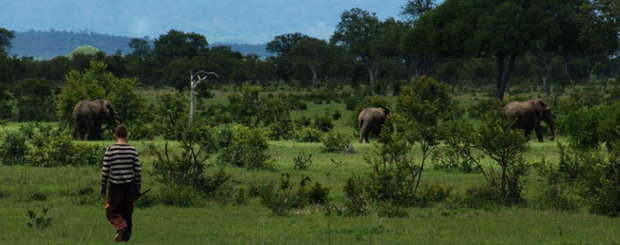
|
Risks and responsibilities in nature
Brief visitors can be assigned a mentor inside that keeps an eye on them and are responsible for them while they are there.
Each person that comes to stay and move around independently in the nature area should get a basic education regarding the risks of nature, the routines in the community and about how to act responsibly in the area respecting nature. Possibly there will be tests that the routines are understood before allowing people to walk freely in the area.
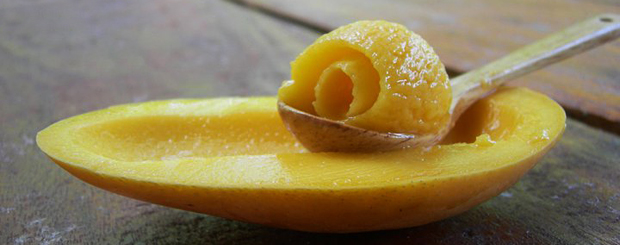
|
Potential developments and locations
Help researching what countries in Africa has laws which makes land accessible and which countries has good fenceless national parks would be greatly appreciated (like Masaii Mara in Kenya or many national parks in Tanzania for example, Saadani National Park on Tanzania´s coast is one example). Fenced national parks can also be considered in cases where the project may be allowed inside the fences and fenced private land with wild animals is also an option that is common for example in South Africa.
National parks with already existing villages inside the park may be extra interesting since the people in charge there are already used to dealing with the coexistence of humans, wild animals and protected nature.
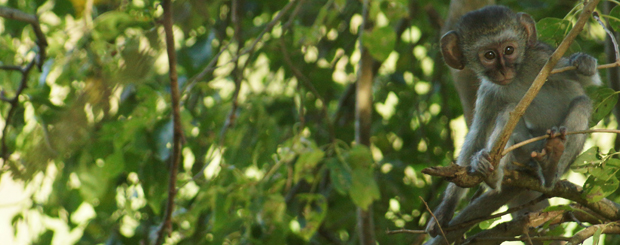
|